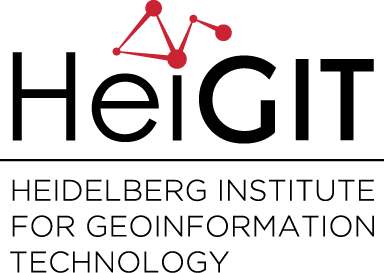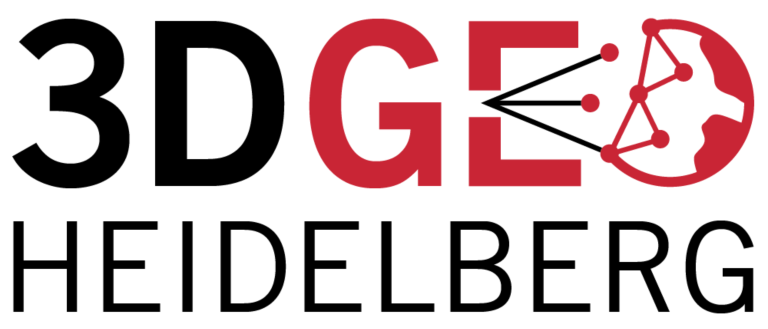Category: Research
-
Derivation of an OSM graph with TMC LCL traffic information to provide real time traffic services
Increasing traffic, especially in urban areas, leads to more and more infrastructural bottlenecks and congestion inside transportation networks. The aim is therefore to use existing transport networks as efficiently as possible. Current traffic and incident reports from the Traffic Message Channel (TMC) are an important source of information to provide further services in the context…
-
ISDE Video Competition for Young People
Who wants to be the winner in the ISDE Video Competition for Young People for the 9th International Symposium on Digital Earth in Halifax, Canada? The main theme of the symposium and thus the video should be “Towards a One-World Vision for the Blue Planet”. More details can be found here: http://www.digitalearth-isde.org/news/744
-
Call for Abstracts and Special Sessions – 9th Symposium of the International Society for Digital Earth
We would like to draw your attention to the second call for abstracts and special sessions for the 9th Symposium of the International Society for Digital Earth, October 5-9, in Halifax, Canada. The overarching theme of the symposium is “Towards a One-World Vision for the Blue Planet”. See here for further events (co-)organized by the…
-
2nd. Call for Papers: RICH-VGI Workshop @ AGILE 2015, Lisboa
2nd Call for Papers: Enriching VGI @ AGILE 2015 Workshop We call for papers for the Workshop: RICH-VGI: enRICHment of volunteered geographic information (VGI): Techniques, practices and current state of knowledge Workshop @ the 18th AGILE Conference on Geographic Information Science Lisboa, Portugal. Tuesday 9 June 2015 In recent years we have witnessed the rapid…
-
Major Update for OpenRouteService Backend
Last few months, we have been working hard on a new backend for OpenRouteService.org. The new implementation is much more flexible and faster than before and supports more sophisticated routing profiles. The services are deployed on a new and more powerful server that makes it possible to update routing graphs based on OpenStreetMap data more…
-
GIScience group participated in Open Data Day Mannheim
Last Saturday (21/2) the GIScience group Heidelberg was part of the International Open Data Day. Open data enthusiasts all over the world teamed up to create new applications derived from open (not only governmental) data. The local open data day in Mannheim has seen 7 finished projects including Wikipedia edit wars analyses, public transport visualisations,…
-
Coverage of OSM highway features with corresponding GPS tracks
As can be seen in the WebGL visualisation of the GPS data collected by the OSM contributors in Heidelberg (reported earlier in this blog), the quantity of recorded GPS tracks along an OSM highway features depends on the feature class. It has already been found before that the GPS data is not equally distributed among…
-
Methods for Participation in Urban Planning in the Knowledge Society – New Project Accepted
Recently a new joint project together with several groups at Heidelberg University has been accepted and is starting now. The interdisciplinary so called “Reallabor Urban Office” deals with sustainable urban development in the knowledge society and is coordinated by Prof. Gerhard (Geography of North America) and tightly linked to the Internationale Bauaustellung IBA Heidelberg. The…
-
Citizen Science Workshop in Osnabrück
The German Federal Ecological Foundation organized together with the consortium „BürGEr schaffen WISSen (GEWISS)“ a citizen science workshop, which took place at the 26th and 27th of January. Participants from academia, industry and administration discussed recent trends and applications. Furthermore, group discussions regarding limitations and urgent problems of citizen science were also on the agenda.…
-
Visualising GPS data from OpenStreetMap using WebGL
GPS data uploaded to the OpenStreetMap servers is a popular example of what is called Volunteered Geographic Information (VGI). The data has been (and is still) collected by the project contributors primarily to support mapping. As the inclusion of roads and paths in the map is a major goal of the project, the collected GPS…
-
Modeling the evolution of OpenStreetMap with Cellular Automata using a new VGI Contribution Index
Major research efforts have so far dealt with OSM data quality analysis, but the modality of the evolution of OpenStreetMap (OSM) across space and time has been barely noted. Therefore, a new study by Jokar Arsanjani et al. that has recently been accepted for publication in Transactions in GIS aims to analyze spatio-temporal patterns of…


